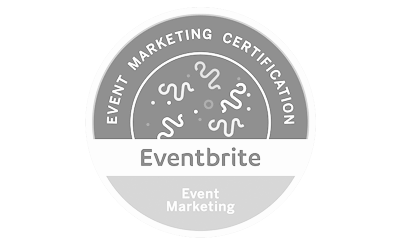
In a recent file review at my office, I gave my team a primer on how I build audiences on social media across the channels that are most relevant to attorneys. Many law firms set up social media channels and some even share content on them, but if no one is listening is social media worth it? In most cases, the answer is no.
WHICH SOCIAL NETWORKS SHOULD LAWYERS USE?
The number of social media outlets seems to grow exponentially each year. Busy lawyers should be selective about which social networks they choose to use. Simply setting up a profile does not equate to appropriate social media usage; instead, a law firm should be both meaningfully present and interactive. The top four social networks that I recommend lawyers use are:
- LinkedIn (both an individual profile and a Company Page)
- Facebook (both an individual profile and a Page)
- Google (both individual Google Plus profile and firm business listing)
WHY SHOULD LAWYERS BUILD SOCIAL AUDIENCES?
When you set up your social channels for the first time, you most likely start out by connecting with your friends and colleagues, and following a few accounts that you find interesting. While some of those initial connections may follow you back or add you to their circles, many may not. It is important to keep a balanced social presence; for example, on Twitter you do not want your law firm to be following three times as many users as are following you. Being “upside down” with regard to followers and/or not having very many connections decreases your account’s credibility with users on a superficial level.
Before you start seeking out connections and building your social audience, you should ensure that your channels are all professionally designed in the same aesthetic as your law firm’s website and other digital assets. Once you are “looking good,” you can start reaching out to a variety of online sources to connect. You will want to connect with as broad of a relevant audience as you can – local groups such as your Chamber of Commerce, legal industry groups such as your state bar, and other lawyers that you know and respect. If you are overly aggressive with your social reach and attempt to build a following too quickly (or pay for a huge amount of connections at once), the result can be that the networks see your account as spam. Take your time and build credibility steadily on each channel.
Another desirable connection will come in the form of a social media influencer. If you can connect with and get an influencer interested in your content, you have a chance to broaden your reach significantly. The influencers within any industry get hundreds of requests and/or interactions per day. The secret to reaching them is standing out from the herd and catching their attention. Influencer engagement can drive substantial results with the proper social media practices and strategy.
PRACTICAL ADVICE FOR BUILDING YOUR SOCIAL MEDIA AUDIENCE
Social media audience building is not just relevant for brand new accounts. A reach-expanding strategy can be undertaken when a law firm reactivates dormant networks, or when the firm is already active but wants to take things to the next level. My recommended audience building protocol breaks the time spent on social media up into just 20-30 minutes each day, keeping busy lawyers’ attention for a short time and building slowly enough to steer clear of the spam zone.
LinkedIn is the social media network of choice for the majority of lawyers. Be sure to log in regularly and accept connection requests from lawyers, law firms, and other legal industry folks that you know won’t spam your account with solicitations for business. Be friendly: send connection requests to five new lawyers twice each week.
On Facebook, you can and should encourage your friends from your individual profile page to like your law firm’s Page. You can also promote your Page for a small fee to persuade a targeted group of users to like it. Your law firm Page can like others’ Pages, like others’ posts, comment on others’ posts and more. Each time your law firm’s Page engages, your brand is seen by anyone viewing the location of that engagement.
On Twitter, a law firm should strive to follow 20 new lawyers, law firms, or legal associations each week. You should follow 10 new businesses, non-legal organizations or vendors, and media professionals each week. Add everyone you follow into customized Twitter lists, such as “Texas Law Firms.” Engaging with other users by retweeting their content and favoriting their tweets is also another great way to make friends online.
On Google Plus, you should create circles in the same way that you create Twitter lists. Add 20 new lawyers to your relevant circles each week. Google Plus’ version of a Facebook group is a “Community.” Join at least one new legal industry Community each month, sharing your law firm’s blog posts in at least one of your Communities as well as publicly each week. The +1 is Google’s version of a Facebook Like or a Twitter Favorite, so feel free to show your newfound Google circle-mates some love by giving their content a +1. Good digital manners also dictate that you should circle back all legal industry accounts that add you to their circles.
SOCIAL MEDIA GOALS
Our goals with audience building are not solely limited to getting more people to follow us on social media; we also share our content on social media as part of our inbound marketing strategy, in order to drive traffic to your website. For this to work, you must make sure to include your website on all of your social profiles. One of the most valuable uses of social media is to drive inbound traffic to your law firm’s website. The converse can also be used as a benefit – you can prominently display social media icons on your website to help build your social following. Be sure to include social media icons in your firm’s e-mail marketing designs.
You can also build your social audience through offline methods, including the use of offline signage to show your real life fans where they can find you online. You can, and should, also include your firm’s social channels in your speeches, on PowerPoint presentations, print marketing materials, and more. Don’t hold back – my grandmothers are both active Facebook users, so most of your potential clients will be too.














Leave a Comment